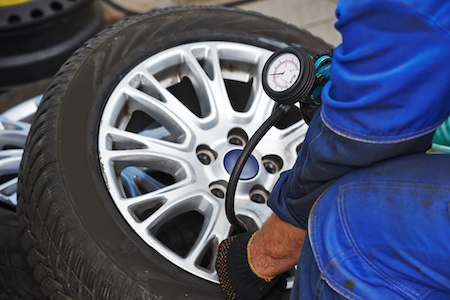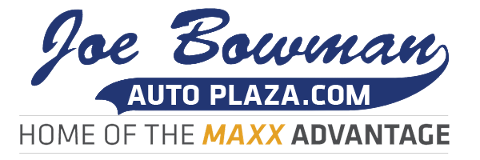Tire Maintenance: How to Stay Safe on the Road
Of course you want to get the most out of your tires. That only makes sense! But along with extending the life of your ride, you're also ensuring the safety of your passengers. That's why regular tire maintenance is so important.
The Biggest Reason for Consistent Tire Maintenance
Tires affect just about everything with your ride. From vehicle handling, braking, smooth riding, to safety. That's because your tires are the only part of your vehicle that have direct contact with the road.
Constantly working, it's critical to have the correct air pressure, balance, tread depth, and wheel alignment.
Signs of Tire Wear
Not caring for your tires can lead to premature wear, a flat, or a blowout. What's more, wheel alignment and worn suspension parts directly affect tire wear and tire performance.
Here are some of the most common signs of tire problems:
Over inflation-Too much air pressure will cause the middle section of the tire to contact the road, creating more wear in the center and less wear on tire edges.
Under inflation-Here, the opposite is true. The tire's outer edges get the most road contact, creating wear on the edges of the tread with less wear in the center.
Raised tread or sidewall-When a portion of the tread or sidewall is raised, it can indicate that one of the belts in the tire carcass has separated from the adjoining ones.
Wear on the edge of a tire-You'll see this when the wheels are out of alignment.
Erratic wear-Often called cupping, it can mean that the wheel is out of balance. It can also mean that the suspension components or shock absorbers need to be replaced.
When you're driving, listen to your car. If you feel an unusual vibration or thumping noise, it, too, can mean a tire is out-of-balance. The tread may have a flat spot due to a panic stop or it could be a tire with a separated belt.
If your vehicle is pulling to one side at a steady speed, it could mean the tires are either over or under inflated, or damaged. If a visual inspection shows that the tires are fine, it could be a brake problem or poor wheel alignment.
3 Biggies for Tire Maintenance
To keep your tires performing their best, get them rotated regularly. Front and rear tires perform differently, operating at different loads. This results in different steering and brake functions, which causes unequal wear patterns.
Tire Rotation
To get the maximum performance and life out of your tires, rotate them! Follow your owner's manual's recommendations for a suggested rotation schedule.
Tire Balancing
Tire balancing is essential to proper tire performance. It minimizes uneven tire wear and rewards you with longer tire life.
There are two times when you definitely need to have your tires balanced. First, when new tires are installed. Small weights are attached to the wheels. These weights limit tire and wheel vibration when they turn.
Secondly, whenever a tire is removed from the wheel due to a puncture, tires should be balanced.
Wheel Alignment
All vehicles have specific wheel alignment settings. If the alignment measurement falls outside of a certain range, then your tires can wear unevenly. You'll also notice that vehicle handling and fuel economy are affected.
How can you know if your wheels are properly aligned? When you can drive your car down a straight stretch of road and it doesn't drift or pull to either side.
That said, drifting or pulling can also be an indicator of other problems. Either way, the vehicle needs to be inspected.
Spend a few minutes every month to inspect the health and safety of your tires. It's a proactive tip to protect your family, ensure good vehicle performance, and lengthen the life of your tires.
At Joe Bowman Auto Plaza in Harrisonburg VA, we have a full-service maintenance and repair shop. Staffed with GM certified mechanics, these professionals are trained to handle the needs of all types of vehicles, not just GM.
If you're looking for careful, attentive service at a fair price, call us today!


